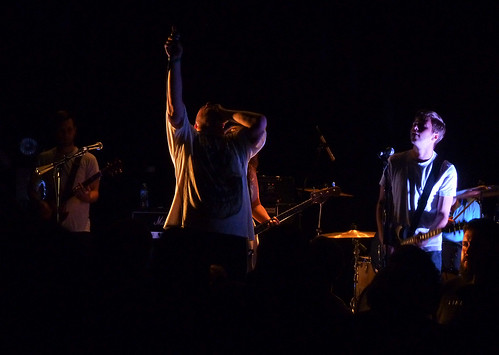Most serious photographers like having a pocket point-and-shoot camera to throw in their bag or keep in a pocket, so that they’re rarely without a camera. It’s the idea behind the adage, the best camera is the one you have with you.
However, if you are serious about photography you tend to like to have some manual control over your camera and the potential to obtain technically good pictures in a variety of conditions. My first digital camera was a point-in-shoot, Olympus Stylus 300, which I bought in 2003. It had no manual controls, but I wasn’t very good at using manual controls then anyway. I upgraded in 2005 to another Olympus, the Stylus 800, which jumped me to 8 megapixels, better ability to take low light pictures without a flash and manual controls. Then in 2008 I bought an Olympus 830 on eBay. It had a longer 5x zoom lens, but no manual controls. I gave the 800 to my wife, but it felt like the 830 was a step down in picture quality and control from the 800.
There are several models of point-and-shoot camera that offer that combo of compactness, manual control and good picture quality, but they’re also on the expensive end of the spectrum. And I’m cheap. But earlier this summer I found a camera deal that I’ve been quite satisfied with.
At the daily deal site woot.com I bought a Panasonic DMC-ZS6 for about $130. I was drawn to the camera’s long 12x zoom lens, combined with real manual controls, like aperture and shutter priority. It was a clearance because it’s a year-old model, and one that was primarily sold at warehouse stores like Costco. While the zoom is long, the widest point is a very nice 24mm equivalent. The camera is a member of what has come to be called the “travel zoom” class of cameras, offering long lenses in a compact package. However, the lens is not particularly fast, with a maximum aperture of f/3.3 at the widest, but a relatively fast f/4.9 at the full 12x zoom, which is better than the f/5.6 or f/6.3 you might find in other cameras.

The camera is little bigger than the most compact point-and-shoots, but I’ve found it to be no big deal to have in a bag. It’s not great for a pocket, but few cameras are. It’s still very compact for having such a long zoom. The optical image stabilization is also very effective, letting me take still sharp photos at the maximum zoom range.
A nice feature Panasonic has added to it’s travel-zoom cameras is the ability to extend the zoom range by reducing the pixel count. While many cameras offer a so-called “digital zoom” which really just blows up the picture like in Photoshop, Panasonic actually let’s you take a picture from patches of the center part of the sensor. The camera’s normal resolution is 12 megapixels, but you can take photos at 8 MP with a zoom of 14.7x, 5 MP at 18.8x or 3 MP at 23.4x. The effect is the same as cropping the photo later in your editing app, but in the field it’s nice to be able to just shoot it that way, seeing accurately on the screen what you’re going to get, without having to edit later. The quality is much better than a digital zoom if you don’t mind the smaller pixel count. For 4×6 prints or the web 8 MP or even 5 MP have plenty of resolution, and are good for even 5×7 or 8×10 prints.
I think the camera performs very well up to 400 ISO, and is quite acceptable even at 800 or 1600 ISO, provided you don’t underexpose. When it comes to exposure I find that the camera is pretty spot-on, requiring me to compensate only when exposure is typically challenging.
I’ve even used the camera to shoot a rock concert in a small theater and managed pretty reasonable results shooting from the middle of the place. Being able to set the exposure manually–fixing both the shutter and aperture–allowed me to get many more decent shots under low light and lots of action than if I had to rely on the camera to meter for each one.

I expected I would like the camera, but also thought that the compromises in terms of lens speed and size would keep it from being a constant companion. So I was surprised to find that it has become my grab and go camera, especially when I don’t want to think about selecting lenses or packing a kit.
Still, if I’m going to be more serious about my picture taking on an outing or trip I choose my Sony NEX-5, which is a bit bigger with a lens, but a much better performer until almost all conditions. But sometimes even the NEX is more camera than I want to carry, or I’m going somewhere I don’t want to worry about having a more expensive camera. In that case I don’t hesitate to bring my Panasonic ZS6.
Although it’s a 2010 model camera, you can still find the ZS6 online. You might not find it for as cheap as I got mine, but it does pop up at Woot and other deal sites with some regularity. Although I haven’t tried them, the Panasonic DMC-ZS5 and ZS7 are very similar cameras that ought to offer the same performance. Also, if you want a current model-year camera the Panasonic ZS8 and ZS10 should perform at least as well.
It is a great time to be cheap-skate photographer.
Leave a Reply